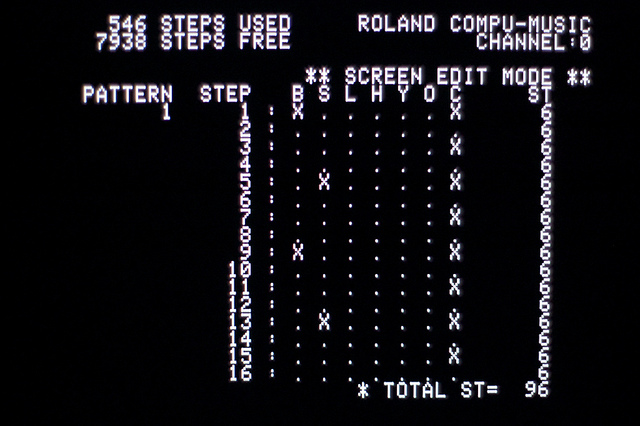
By day, Chris Randall makes great music software and blogs, but as his not-so-secret Micronaut alter-ego, he’s building a triptych of EPs on the theme of electronics. These aren’t studies for those with gear lust; on the contrary, Chris explains, they are as much compositional exercises in limitation. The devices are a means to greater focus. In the crisp, thumping, rhythms and patterns calculated into Capacitor, that includes devices like the Roland CMU-800R – compu-music, indeed. Give it a full listen, as the tracks cover a gamut of materials.
Taking a break from our usual Twitter sparring matches, I asked Chris to talk a bit about his musical process on this EP. I’m glad to add these records to my permanent listening collection, and would be willing to do so even if they arrived anonymously on my doorstep. See if you agree – and if Chris’ approach to musical results resonates with you, too.
I’ve always found that the most personally satisfying creative results come from giving myself a set of limits, and working within those limits, rather than just staring at a blank arrange screen. The framework the limits provide allow me to pursue a particular creative avenue without apology, and it also breaks habits that I form from releasing some hundreds of songs. For Capacitor (like Resistor before it) I’m composing modally, mostly in Dorian, although there are a couple exceptions; that was the first thing I did to break out of my comfort zone, and set a restriction that was outside my skill level.
I generally come up with melodies and themes on guitar, even if that instrument rarely appears in the finished versions. The reason I do this is that I’m not terribly good at playing guitar, and it makes me pay more attention to the actual melody. In order to further break old habits, I retuned all of my guitars and basses to Open Dm, a tuning I had no familiarity with whatsoever. This forced me to avoid melodies that I play out of habit due to muscle memory.
Where the sounds themselves are concerned, early on in the process I borrowed a [TR-]909 from a friend, and made an extensive sample set of it (available on the “Free Shit” page on AI) which I used as the basis of most drums in both Resistor and Capacitor. I can’t explain why the 909, which I had to this point considered to be somewhat dated-sounding, suddenly caught my interest, but it turned out to work well for what I was trying to do. There are a couple appearances on both EPs from Tattoo and Axon, the two percussion synths from Audio Damage, but for the most part, I used either 909, [Boss Doctor Rhythm] DR-110 (a modded hardware version) or the drums from the Roland CMU-800R, so the EPs in general, and Capacitor in particular, have a very “Roland” sound to them.
The CMU-800R is the sole sound source on the track “CMU,” and this was probably the most difficult song to make, as I also sequenced the song using the CMU-800R software, which runs on an Apple //e. I necessarily had to record each track by itself, and line them all up in the DAW so I could mix, but the song was written, and will run (albeit in a sonically uninteresting manner) entirely from the Apple //e. This was the most satisfying of the tracks on Capacitor to make, even thought it is necessarily somewhat sparse, due to the hardware used.
Other synths I used on Capacitor, like Resistor, are the alphaSyntauri (another Apple //e-based instrument), Korg 770, Moog Source, Yamaha CS-5, Crumar Spirit [a Crumar designed by Bob Moog, Jim Scott, Tom Rhea], and the [currently-available Dave Smith Instruments] TETR4. Everything was recorded and mixed in Live 8, and the only plug-ins I used aside from Audio Damage products were DMG Audio’s EQuality and Cytomic’s The Glue [Compressor]. My Eventide H8000 [harmonizer/effects] and Lexicon 300 reverb are used on every track I make, as a matter of course.
More music:
Study One is made entirely on Korg’s tiny, lovely, silly-cheap Monotron synth. (More on his blog.)
Resistor is the first installment in the trilogy, drawing from vintage analog sounds fused with modern electronics:
The third and final installment is due to arrive early next year.
Listening and more, in case the embedded players are acting finicky:
http://micronaut.bandcamp.com/
